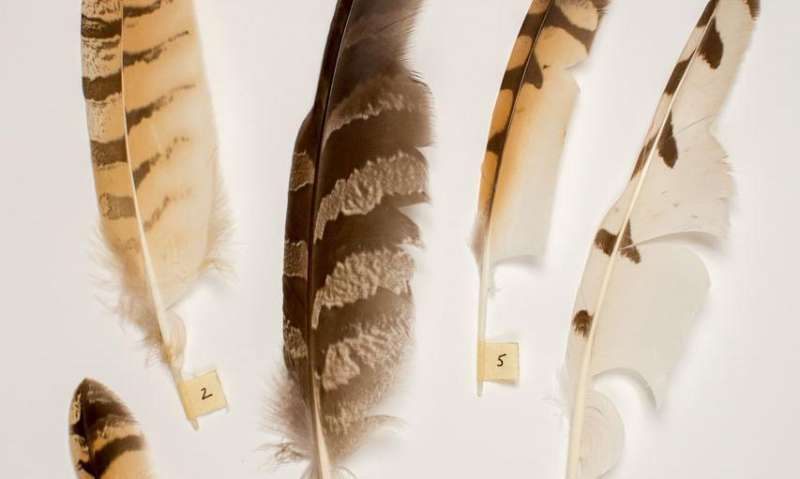A beautiful wing design solution inspired by owl feathers

Many species of owl are able to hunt without being heard by their prey by suppressing the noise of their wings at sound frequencies above 1.6 kilohertz (kHz)—including the range at which human hearing is most sensitive.
Owl wing porosity (the quality that allows air to pass resistively through the wings) helps in suppressing noise. Numerous aero-acoustic studies have examined the effect of wing porosity, inspired by the quiet plumage features of owls. However, much less is known about how wing porosity affects the aerodynamics of these wings, which likely competes with the acoustic benefits of porosity.
Now, researchers at Lehigh University have formulated and solved for exactly the aerodynamic loads on an airfoil, or 2-D wing-like structure. Their mathematical formula uses arbitrary realistic porosity distributions, which may be used in conjunction with an aero-acoustic theory, to determine the aerodynamic/aero-acoustic tradeoff of porous wing designs. The work has been described in a paper to be published in Proceedings of the Royal Society A: Mathematical, Physical and Engineering Sciences called "The steady aerodynamics of aerofoils with porosity gradients."
The work could ultimately be used to improve man-made aerodynamic design of wind turbines and specialized aircraft or autonomous drones.
"Exploratory experimental work by other researchers has measured the noise and aerodynamics of airfoils constructed from various porous materials over a range of flow speeds," said Justin W. Jaworski , assistant professor of mechanical engineering and mechanics and co-author of the paper. "Our work generalizes the existing theory to yield results for arbitrary porosity distributions along the airfoil and produces a porosity parameter that collapses all of the experimental data onto a single curve."
He adds: "Our general result—a single, explicit expression that solves the central mathematical problem without approximation—has the potential to be integrated into the aerodynamic/aero-acoustic design of the wings and blades of small air vehicles, wind turbines, or drones seeking to minimize their noise footprint through passive means."
According to Jaworski, the team's mathematical analysis was built upon classical aerodynamic theory. Interestingly, the key information to obtain an exact result with general porosity distributions came from an old Russian text.
"Perhaps most surprising was the discovery that the mathematical problem could be formulated very generally and solved in closed form without resorting to unnecessary approximations," said Rozhin Hajian, co-author of the paper and a mechanical engineering PhD student at Lehigh.
Using their formula, the results for the pressure distribution on a wing from any given description of the porosity and curvature of a wing section can be determined explicitly from a single equation—a tool that could be of major interest to designers seeking to minimize noise while maximizing aerodynamic properties.
"The fact that our result is explicit and in closed form for arbitrary porosity distributions makes it easy to implement in analyses of aerodynamics vs aero-acoustics to anticipate whether or not a particular porosity design will be effective for a given application," said Jaworski.
More information: The steady aerodynamics of aerofoils with porosity gradients, Proceedings of the Royal Society A (2017). Published 26 September 2017. DOI: 10.1098/rspa.2017.0266 , rspa.royalsocietypublishing.or … nt/473/2205/20170266
Journal information: Proceedings of the Royal Society A
Provided by Lehigh University



















